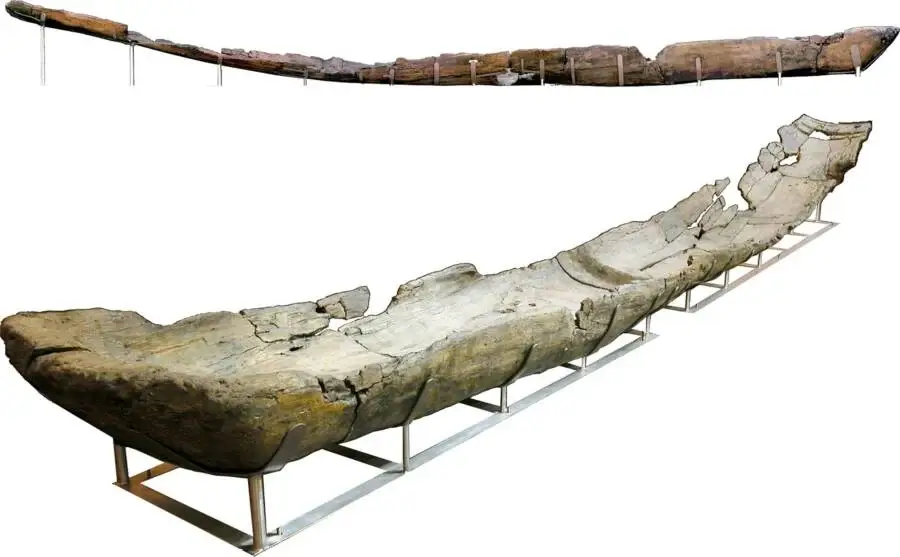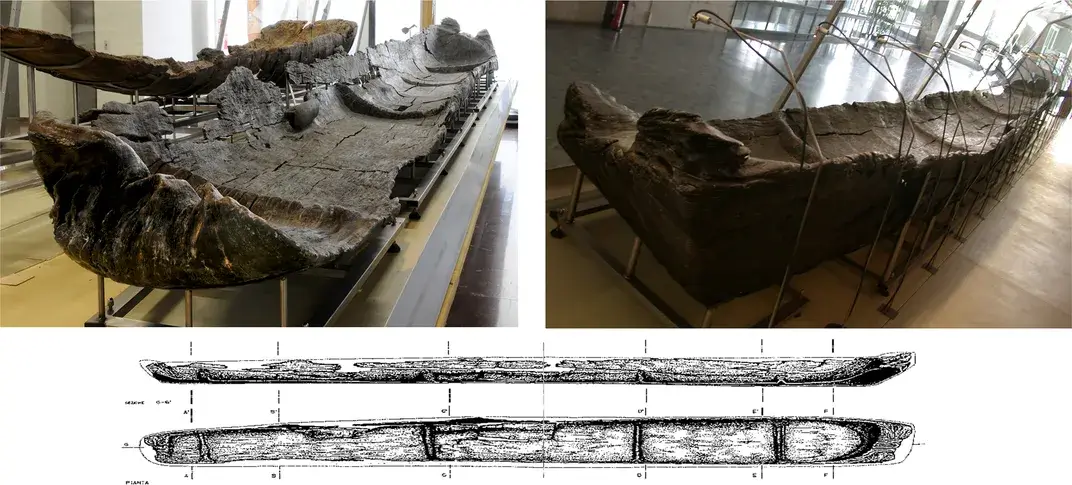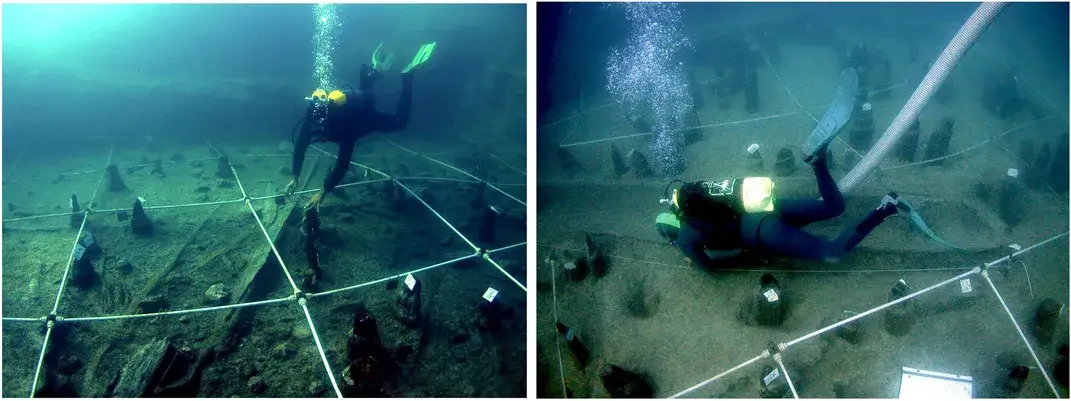
Five Canoes Discovered Northwest of Rome Are The Oldest Boats Ever Found In The Mediterranean
The 7,000-year-old vessels offer evidence of advanced seafaring technology and an extensive regional trade network, a new study suggests.
By: Christian Thorsberg | Smithsonian
For more than 30 years, one of Italy’s most well-hidden archaeological treasures has been an underwater village called La Marmotta.
The site, with well-preserved artefacts, was discovered in 1989 in a lake just northwest of Rome and 23 miles upstream from the Mediterranean Sea. Found among its wooden buildings were five canoes, stretching up to 32 feet long and made from hollowed-out trees. Estimated to be 7,000 years old, the boats showed signs of being equipped with advanced maritime technology, including towing accessories and reinforcements.
Because the original discovery of La Marmotta had only ever been published in the Italian language, widespread study of the canoes and their place in history remained limited. But now that a team of international researchers revisited the site and published their findings in English in the journal PLOS One, scientists around the world are learning about the boats for the first time—and the bustling, sophisticated Mediterranean trade they suggest.

“These artefacts offer further insights into the daily lives, symbolic and technological capabilities of the ancient inhabitants,” says Niccolò Mazzucco, the study’s senior author and an archaeologist at the University of Pisa, to LiveScience’s Jennifer Nalewicki. “No other site in the Mediterranean presents such [an] amount of harvesting tools.”
Man Is Living In 2027 & Human Race Is Gone! (Video Proof)
The five canoes are the oldest boats ever found in the Mediterranean, and among the ten oldest known in Europe. Radiocarbon dating placed their origins between 5700 and 5100 B.C.E., and an archaeobotanical study of the canoes showed they were each made from different materials—alder, poplar, oak, beech and lime tree wood—allowing for different weights, manoeuvrability and strength. This variety suggests different strategies and specialization among early Mediterranean villages, the researchers write.
“They probably had enough knowledge about wood species and their properties to choose them and to use them on the basis of those properties,” Mazzucco says to NewScientist’s Christa Lesté-Lasserre. “These people were working wood with the same knowledge as a carpenter today, just with different tools.”

One of the most exciting finds has been wooden T-shaped objects, drilled with two to four holes, which explain how the canoes were outfitted to carry large loads. These artefacts “are undoubtedly reminiscent of much more recent navigation systems,” the researchers write. The structure suggests the boats were towed using rope, allowing for the movement of goods, people and animals, likely for trade.
“So, these details are really important because they’re actually a testimony of how they could have transported a lot of goods,” Lasse Sørensen, an archaeologist at the National Museum of Denmark who was not involved in the study, tells Lesté-Lasserre.
Foreign grains, animal remains, pottery, paint, tools and figurines found at La Marmotta further suggest a vibrant ancient trade economy.

The canoes may also have been outfitted with sails, outriggers or support floats, the study suggests. Some of the smallest canoes were likely used for fishing trips. Both short- and long-distance travel would be possible, the researchers write. In 1998, a team built a reproduction of a canoe found at La Marmotta and sailed nearly 500 miles around the Mediterranean Sea. Covering 30 miles per day in good conditions, they estimated that the experienced seafaring villagers must have been able to cover much more ground.
The complex construction of the canoes and this evidence of sophisticated trade and travel, the researchers write, also demonstrate a level of social organization previously unconsidered of the area at that time.
“In this way, La Marmotta is causing a literal sea change in our view of those first Neolithic farming groups,” the team writes.
* * *
NEXT UP!
Giant “Skeletons of Enormous Size” Discovered In New Mexico – New York Times Article From 1902
Researcher Graham Hancock coined the phrase, ‘we’re like a species with amnesia,’ and it’s true. Despite the fact that it seems the story of human history is well uncovered, every single year there are new discoveries made that challenge what we once held to be true. In some cases, there are discoveries which are concealed from the general public for various reasons, a great example of that would be the black budget world.
* * *
READ MORE: Ex-Pentagon Scientist, Vallée & FBI Report Suggest Interdimensional Beings Exist Among Us
Interesting! Satellite: Nephilim Giant Caught on Satellite Imagery of the Patagonian Mountains (Video)
Telegram: Stay connected and get the latest updates by following us on Telegram!
We’d love to hear from you! If you have a comment about this article or if you have a tip for a future Collective Spark Story please let us know below in the comment section.
